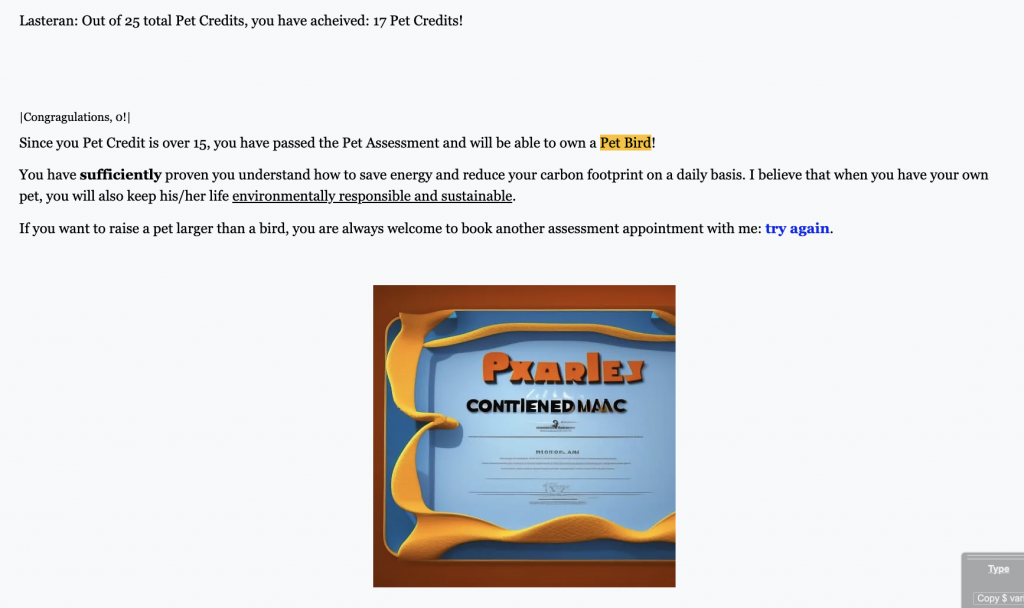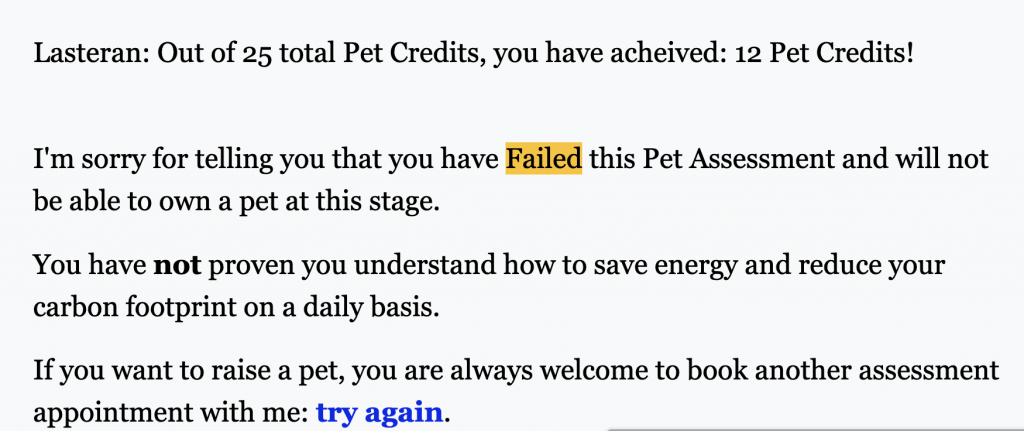Target audience: Since I work for an equity investment company focusing on ed-tech start-ups, I hope to provide our partnered firms and organizations with a digital artifact about energy saving. Since we work with a lot of companies that target grades 4-9, I want to provide a digital artifact that educators can easily add to their energy curriculum to promote energy-saving behaviours. I assume game-based stories will best inform, entertain and persuade students in this age range instead of plain texts and numbers.
Intention: As a creator, I want my audience to know the statistical differences in CO2 emissions regarding different energy decisions. In addition, I want my audience to feel that they can make a difference for others by demonstrating different consequences regarding different energy decisions.
Type: Since I target learners from Grade 4 to Grade 9 for this project, I’m creating this interactive Twine game: The Pet Assessment. Twine games are highly accessible for this age group and work perfectly for independent playing/learning. Additionally, the interactive storylines enable players to see different consequences of their energy decisions, helping them understand why their energy decisions in daily life matter and how they can further save energy.
Game: The Pet Assessment update.html (Click here to download the zip file of the game)
A brief description: “According to experts, pets leave a massive carbon footprint on the planet. It’s estimated that an average-size cat generates 310kg of CO2e per year, while an average-size dog emits 770 kg. For a bigger barker, this figure even goes up to 2,500kg. Therefore, in 2025, the United Nations proposes that every household needs to pass a carbon footprint assessment if they want to adopt a new pet. What kind of pet your family can have depends on how much your family can reduce its carbon footprint compared with the national average. You will help your family to prepare for the upcoming assessment…”
4 Different Game Results: offer different game experiences with “try again” options to help competitive players gain a higher credit result.
19<Pet credits <=25

14<Pet credits <20

12<Pet credits <15

0<=Pet credits <13

Game Resources:
- Beth Kayser’s What is a carbon footprint? (https://www.pawprint.eco/eco-blog/what-is-a-carbon-footprint)
- Livia Albeck-Ripkar’s How to Reduce Your Carbon Footprint (https://www.nytimes.com/guides/year-of-living-better/how-to-reduce-your-carbon-footprint)
- Renee Cho’s The 35 Easiest Ways to Reduce Your Carbon Footprint (https://news.climate.columbia.edu/2018/12/27/35-ways-reduce-carbon-footprint/)
- All of the images in the game are created using AI image generator NightCafe (https://creator.nightcafe.studio/)